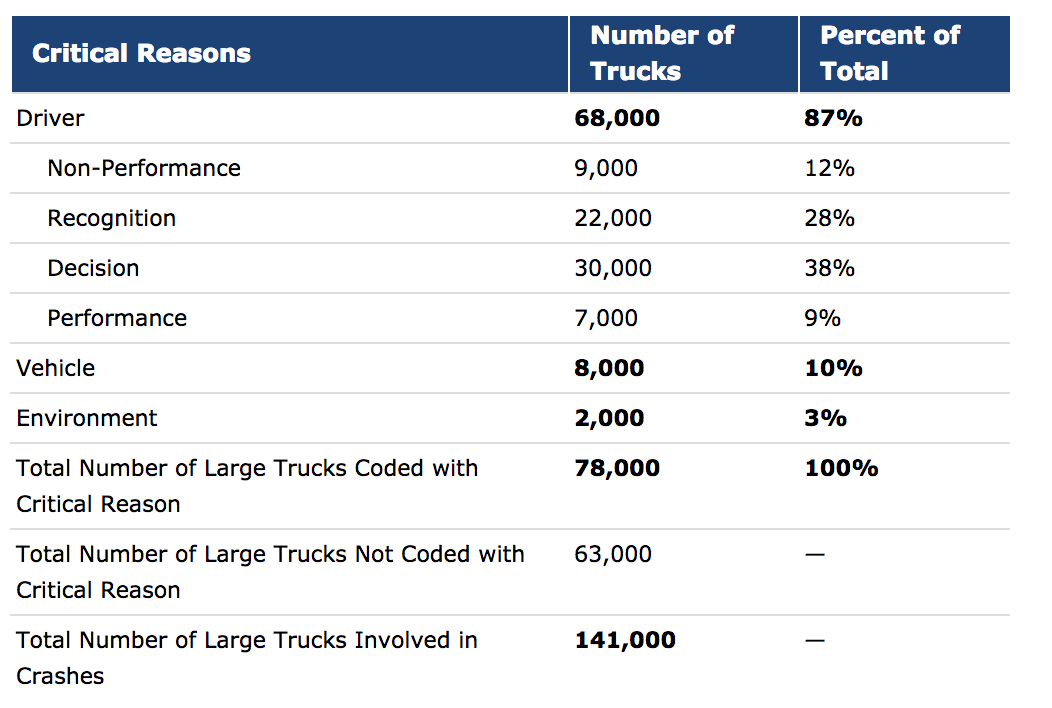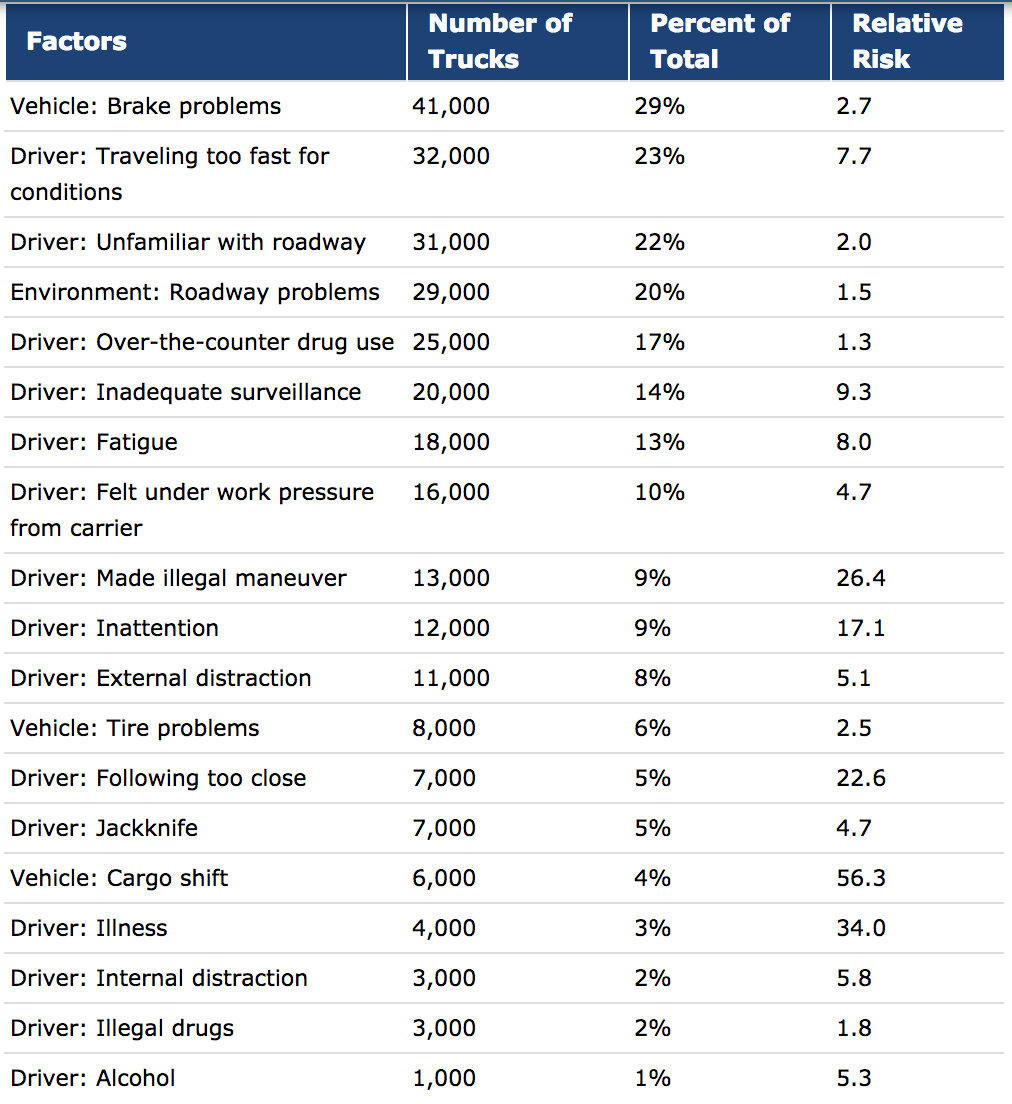
It seems that almost every year, driving truck is among one of the most dangerous jobs. In fact, most top 10 dangerous job lists include truck driving. While we recognize the difficulties in measuring “dangerousness,” the data pretty much speaks for itself:
Transportation incidents increased from 1,984 in 2014 to 2,054 in 2015. Roadway incidents consistently account for the greatest share of fatal work-related transportation injuries. Of these, 660 fatal injuries, or 32 percent of the total transportation incidents, resulted from a roadway collision with another vehicle.
The U.S. Bureau of Labor Statistics has published a variety of interactive charts relating to fatalities and injuries in the workplace.
A brief review of these charts makes it overwhelmingly clear that transportation fatalities and injuries are a significant problem.
According to The Large Truck Crash Causation Study – Analysis Brief conducted by the Federal Motor Carrier Safety Administration Office of Research and Analysis, three major types of critical events were assigned to large trucks:
- Running out of the travel lane, either into another lane or off the road (32 percent of the large trucks in the LTCCS sample were assigned this critical event)
- Vehicle loss of control due to traveling too fast for conditions, cargo shift, vehicle systems failure, poor road conditions, or other reasons (29 percent)
- Colliding with the rear end of another vehicle in the truck’s travel lane (22 percent).
The following tables shows the critical reasons assigned, by major categories.

This table shows associated factors assigned in large truck crashes and their relative risk importance:

According to the study:
One-half of the LTCCS crashes involved collisions between a large truck and a passenger vehicle (car, pickup truck, van, or sport utility vehicle). In those crashes, the same associated factors coded most often for the large trucks usually were also coded most often for the passenger vehicles. For both large trucks and passenger vehicles, there was a statistically significant link between the following 10 associated factors (listed in descending order according to how often they were coded for the large truck) and coding of the critical reason:
- Interruption of the traffic flow
- Unfamiliarity with roadway
- Inadequate surveillance
- Driving too fast for conditions
- Illegal maneuver
- Inattention
- Fatigue
- Illness
- False assumption of other road user’s actions
- Distraction by object or person inside the vehicle.
While there have been many attempts to try to improve roadway safety, as a society, we seem to keep coming up short. But that doesn’t mean we shouldn’t stop trying.
It’s also worth noting that this isn’t simply a “truck driver problem.” Over the years, our attorneys have come to know many excellent drivers.
However, whatever the reason, too many people are injured every single year by collisions with tractor-trailer trucks, and many of those involve actions or inactions taken by drivers.
The nature of our work gives a window into the lives of the people impacted by collisions with tractor-trailer trucks.
Sadly, too many of the truck cases we work involve circumstances that could have been avoided with more measures taken to prevent some of the critical reasons listed above. In fact, many of the driver-specific critical reasons could be greatly reduced with relatively straightforward solutions.
Until we recognize that these numbers are unacceptable, we should all be thinking about how we can bring more attention to roadway safety and putting pressure on the people who can make changes to make the roads safer for all of us.
Reader Interactions